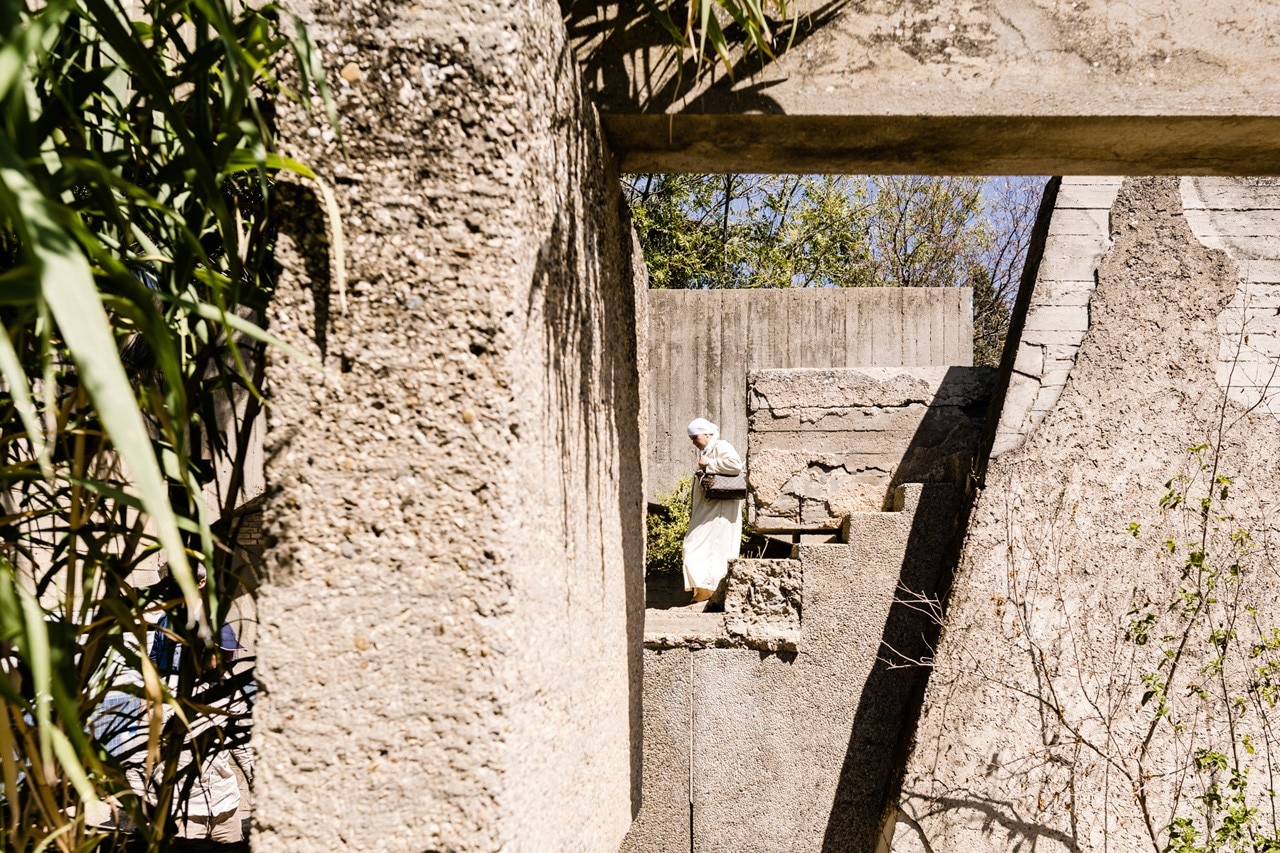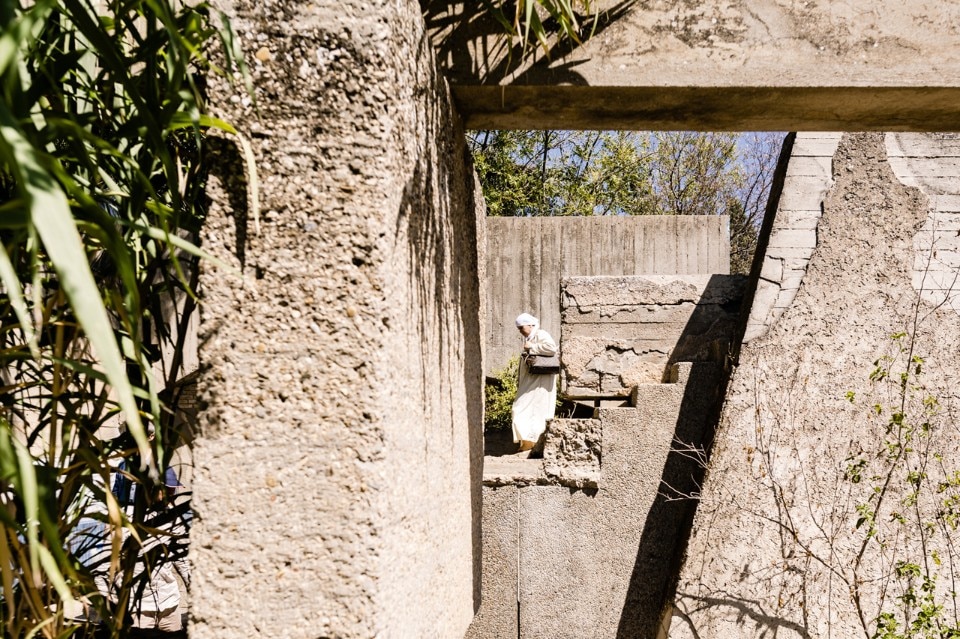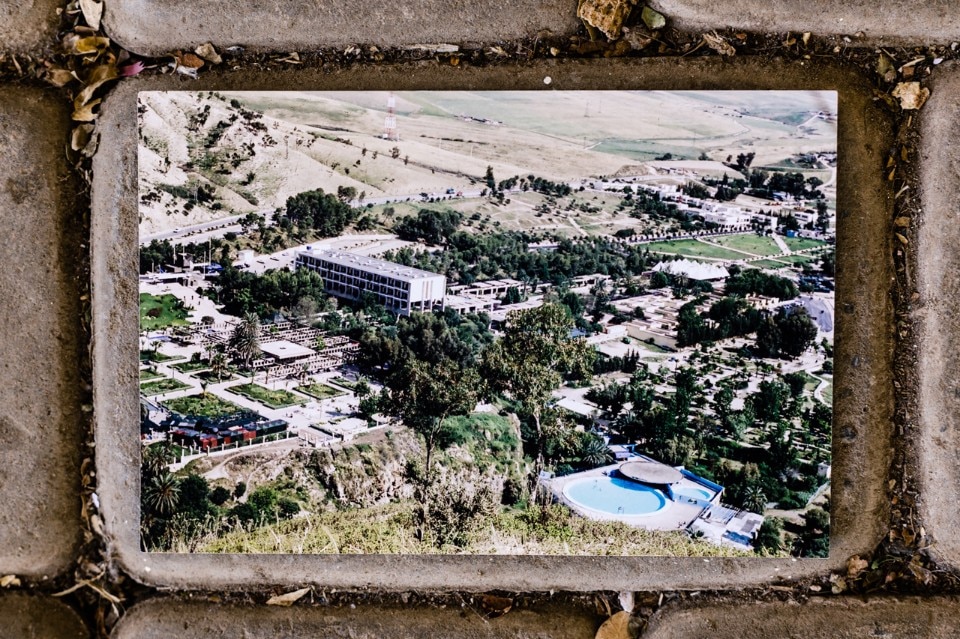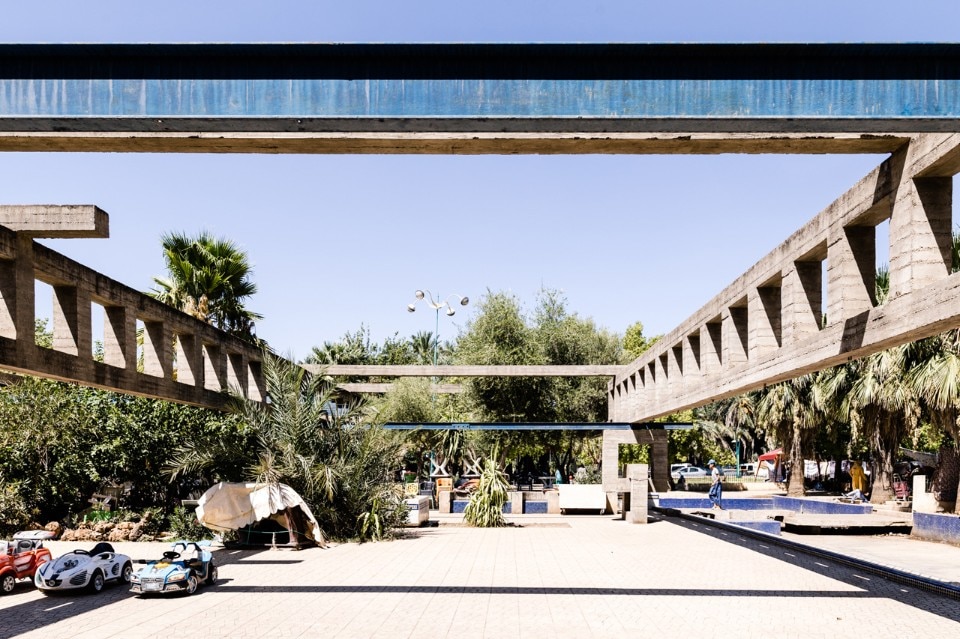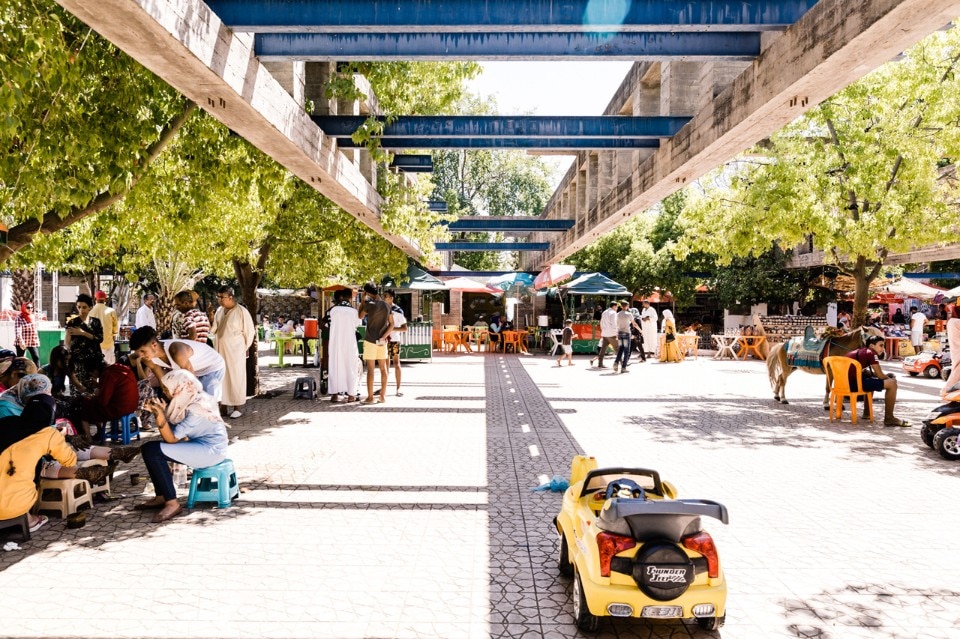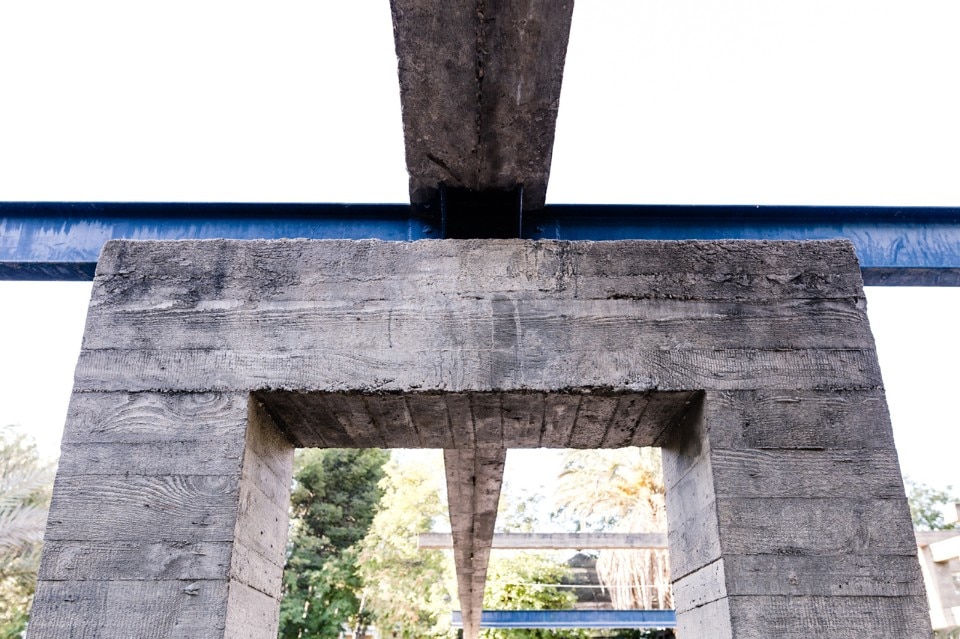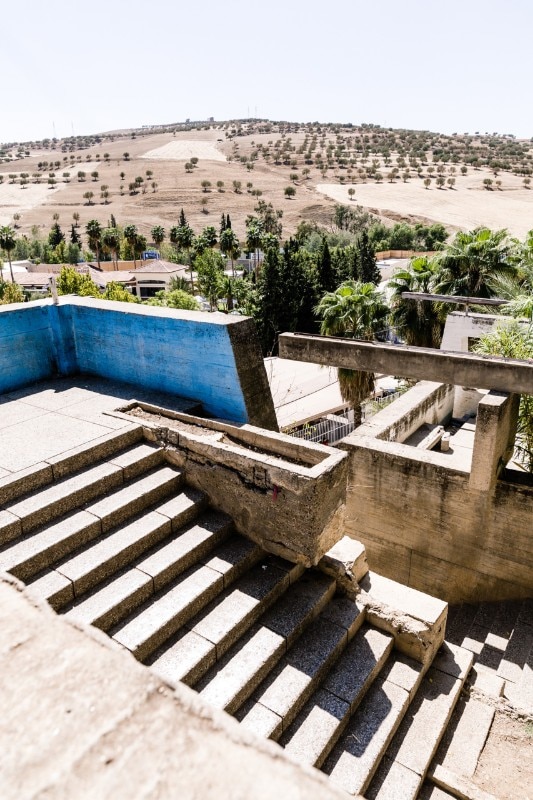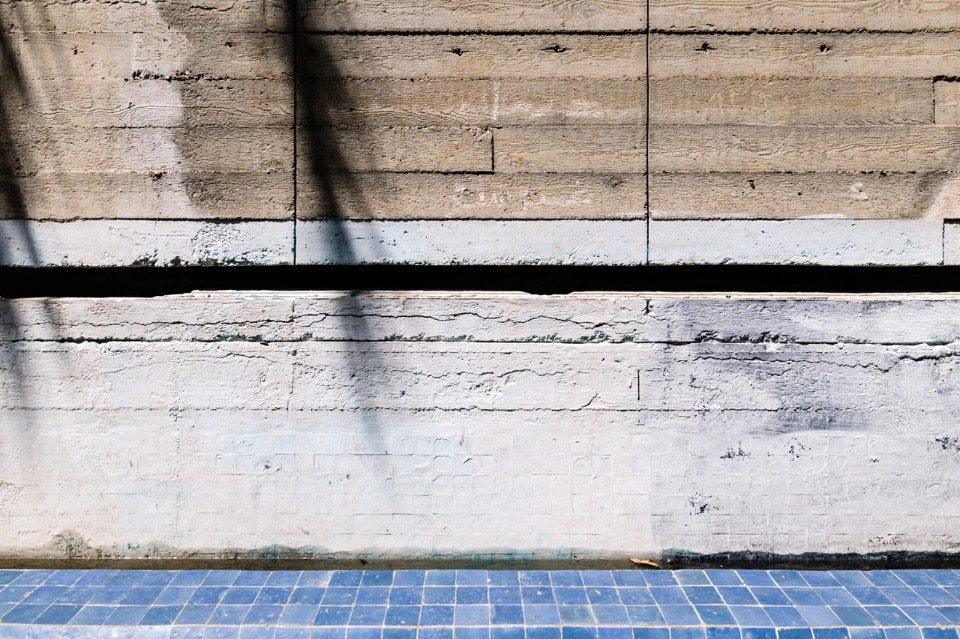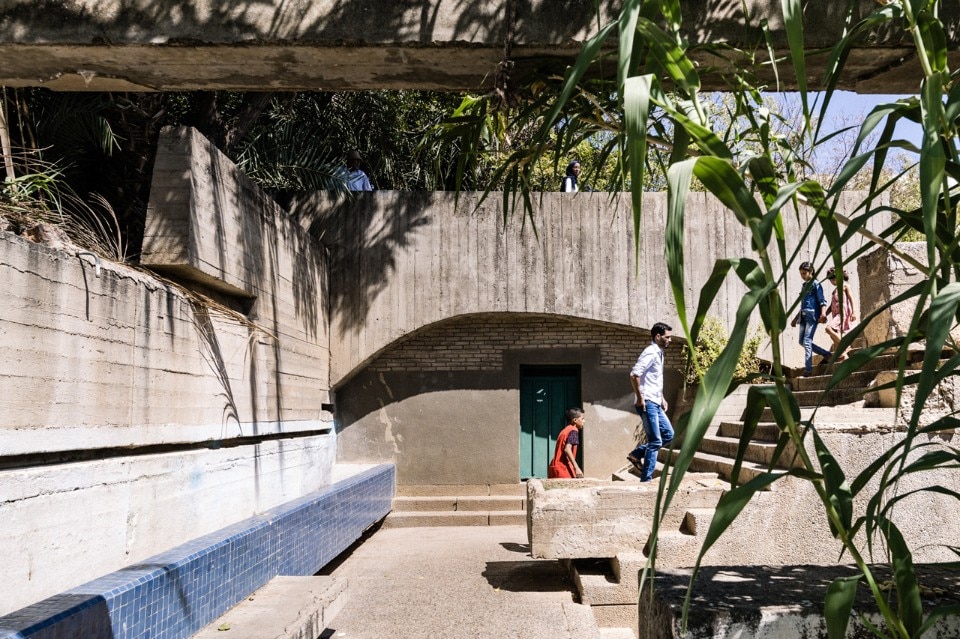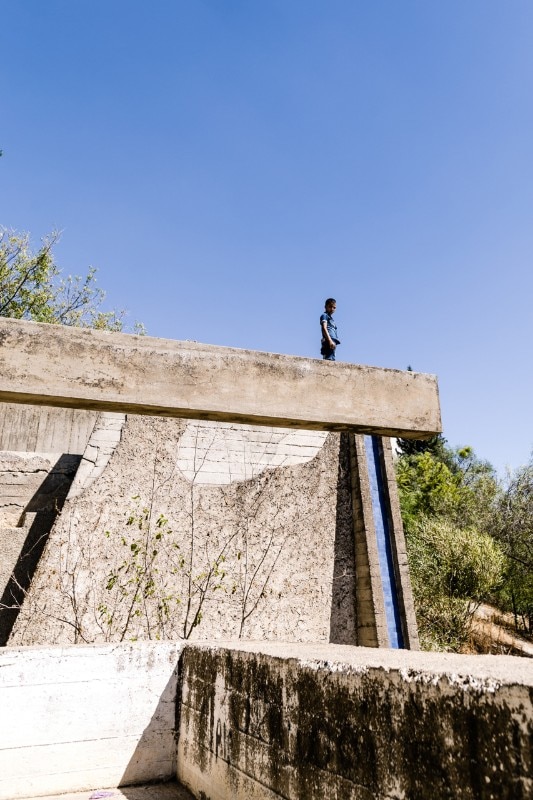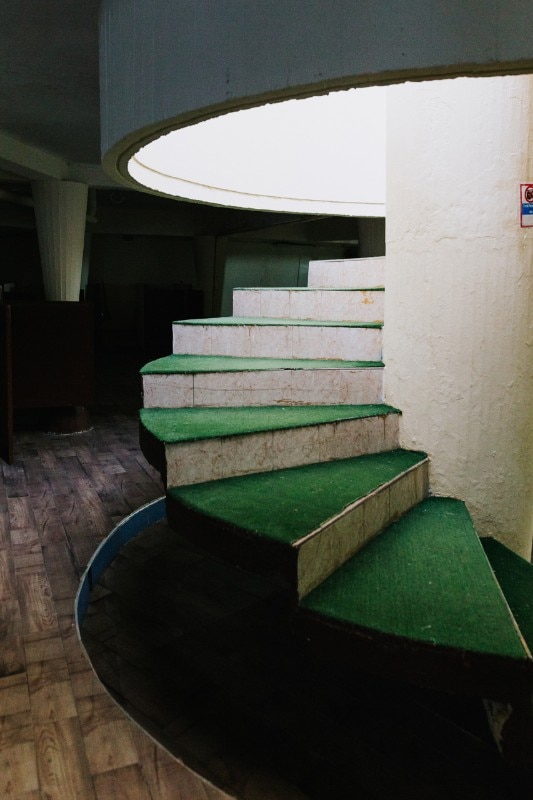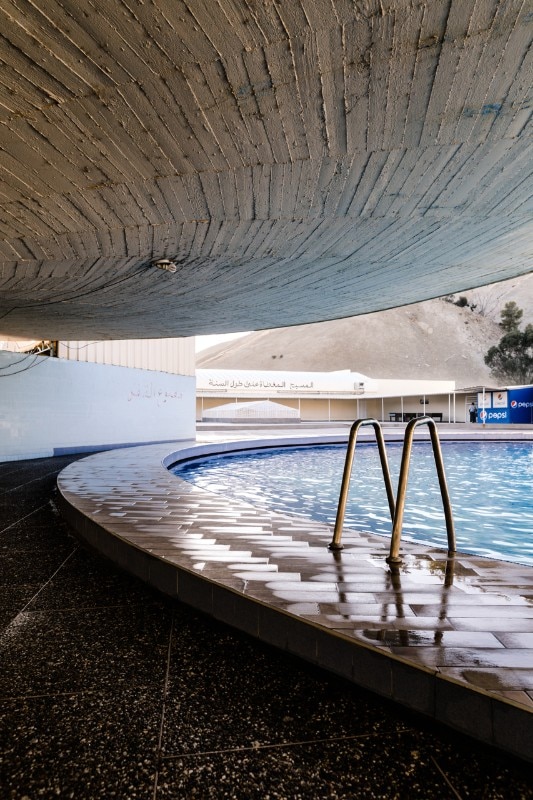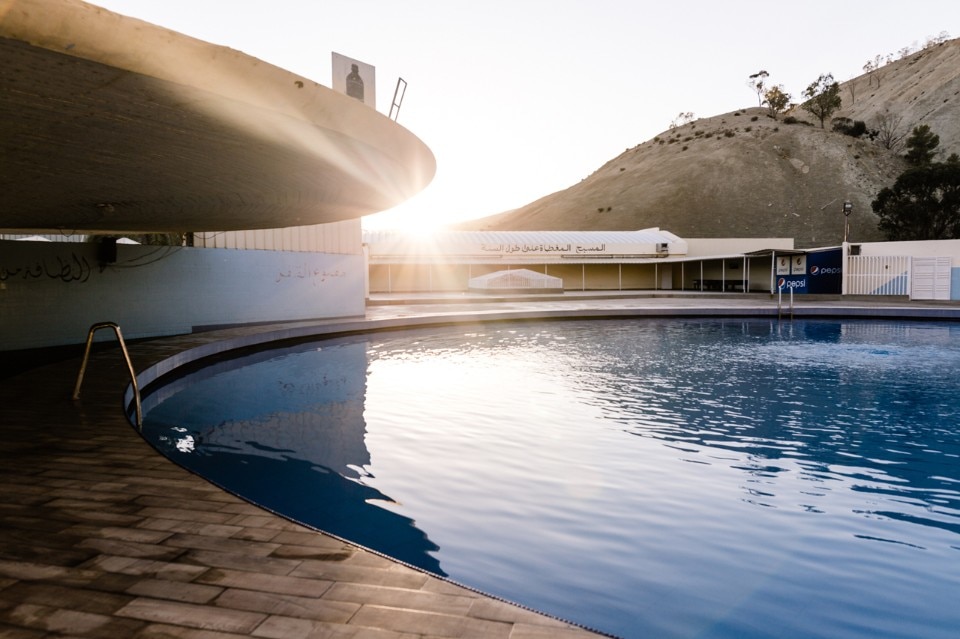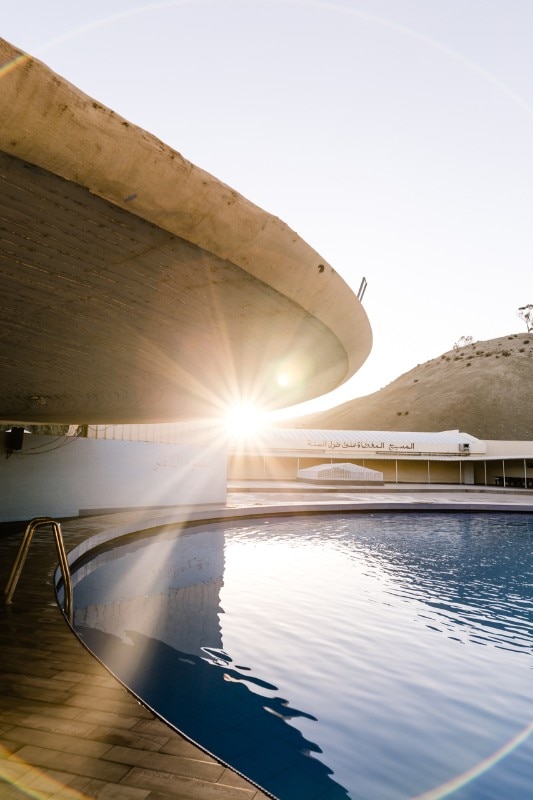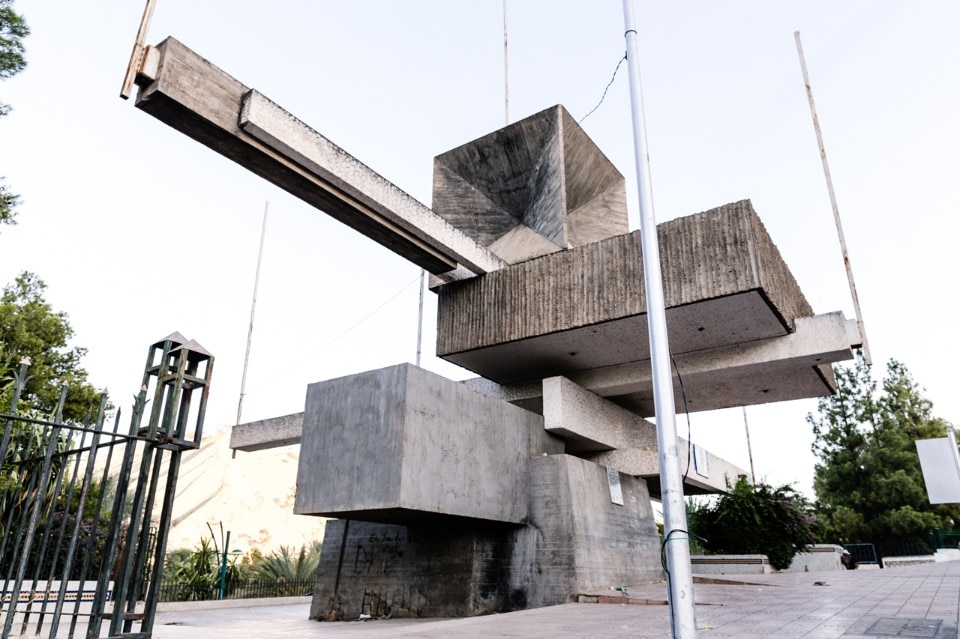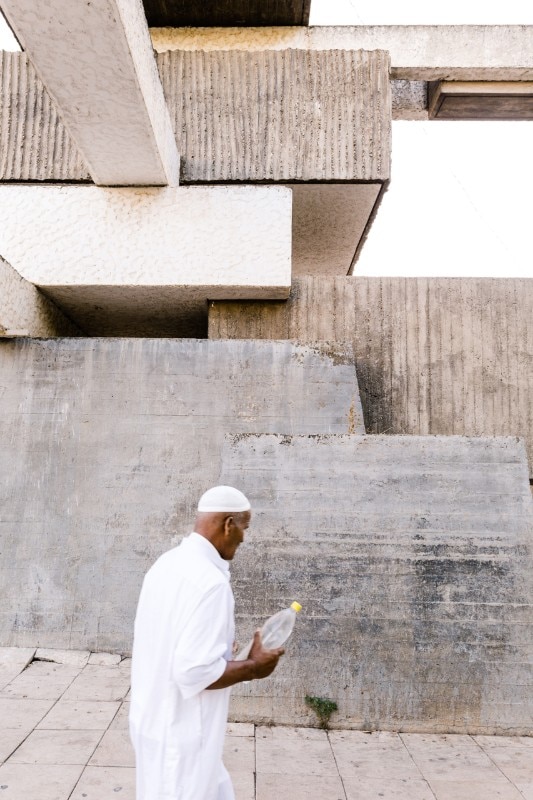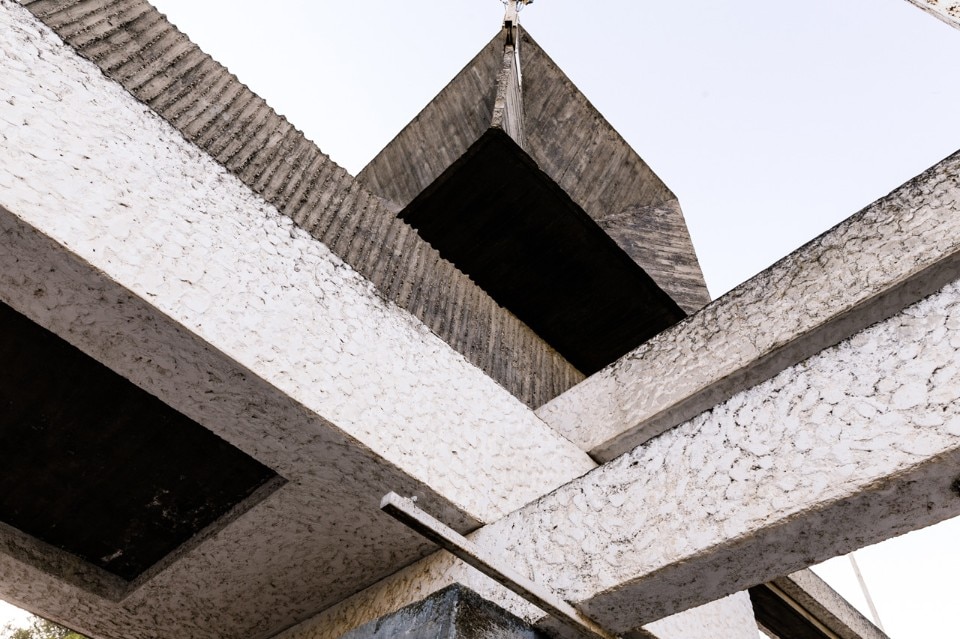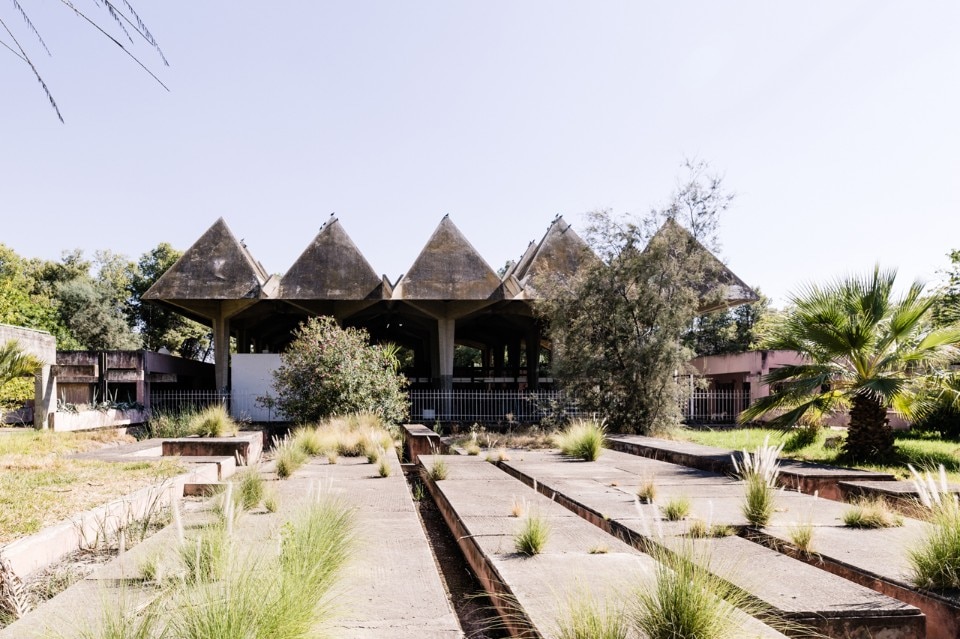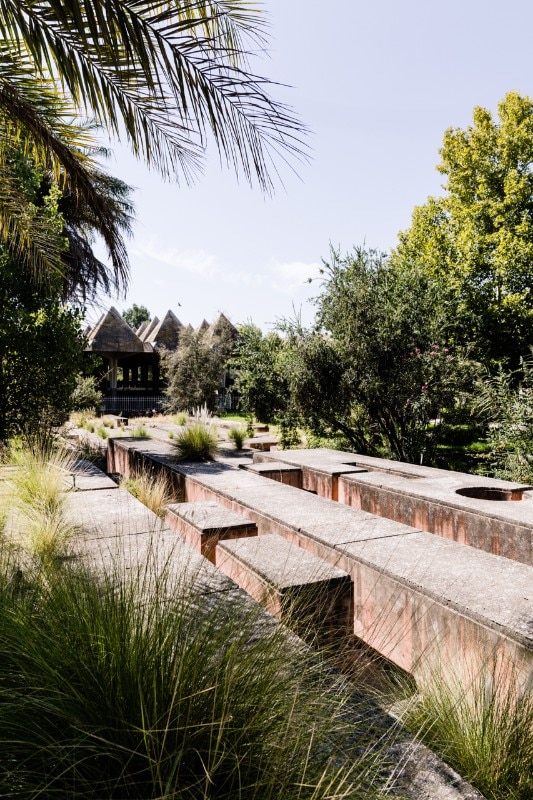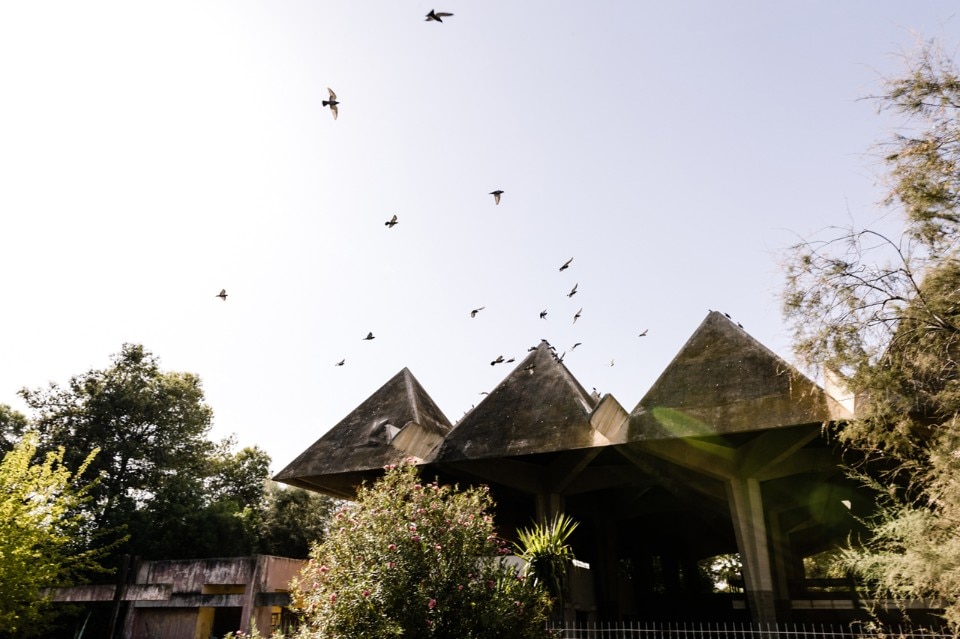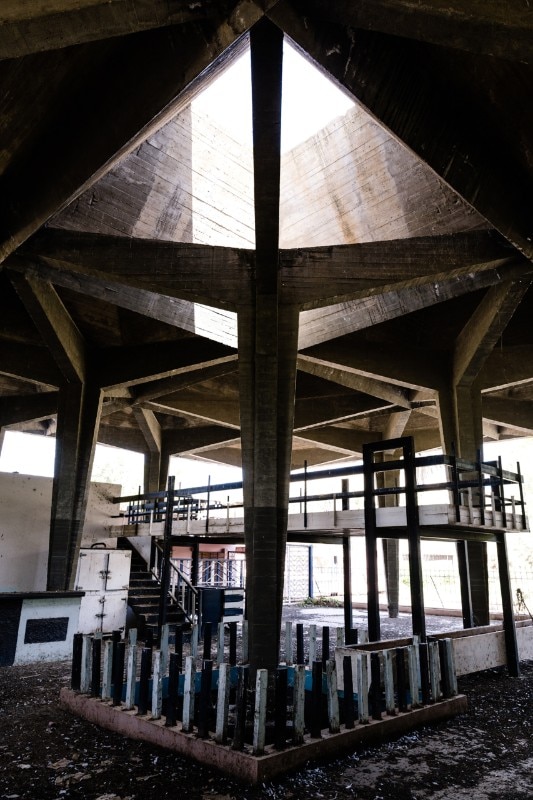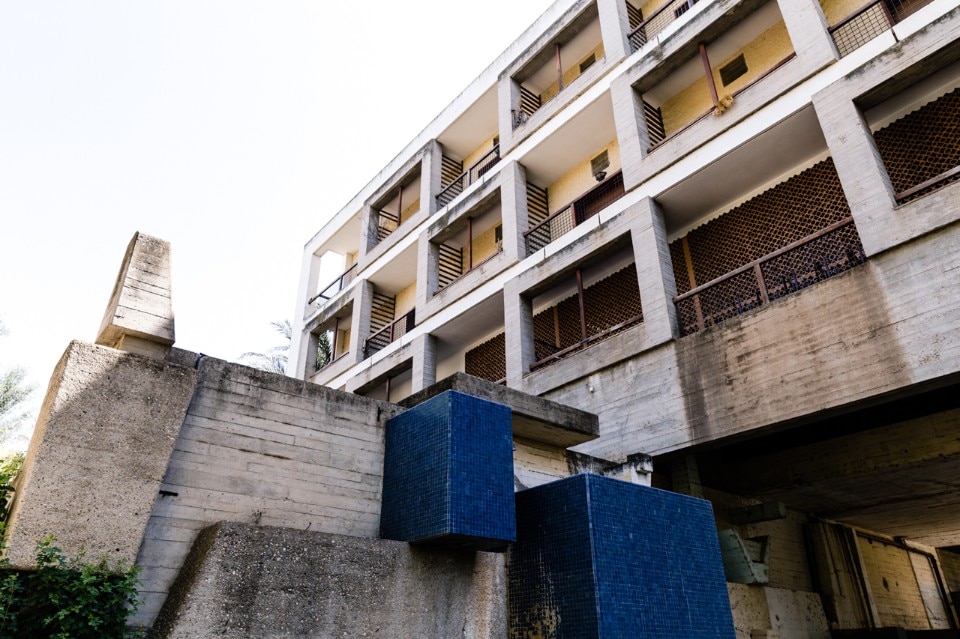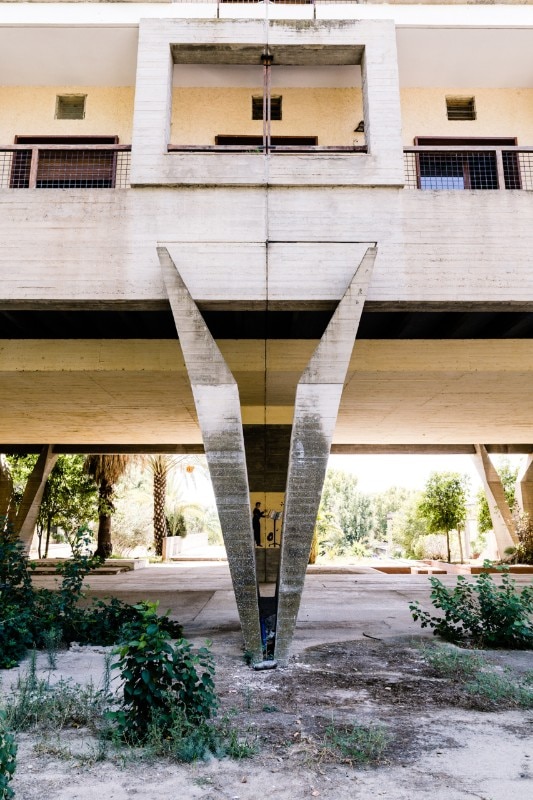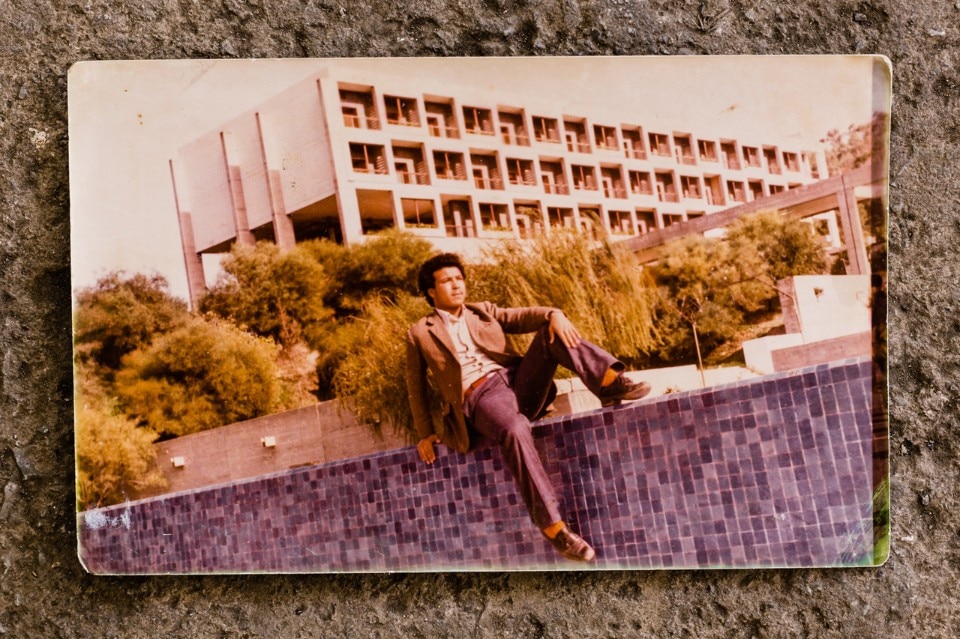Sidi Harazem is an oasis 12 kilometers outside Fez. In the 16th century already, Leon Africanus would describe it as an earthly paradise, and an inhabited evolution of such vision is basically what Jean-François Zevaco could see when he arrived, hired by the authorities of a newly independent kingdom of Morocco to design the new thermal baths.
The presence of a thermal spring in the oasis is in fact renowned since long; and in contemporary times the place —drawing its name from Sidi Harazem, a Sufi theologian who was buried there — would display itself to the architect as a havre de paix, hosting the saint’s grave, the rammed earth huts of a local farmers’ community, and three large basins where men, women and children could go for thermal baths. The place was always bustling with people: the presence of the saint is the reason for a moussem, a great yearly celebration, and the spring attracts a constant wave of inland tourism.
At the heyday of independence, in fact, a new attention is given to seaside euro—inspired tourism (Club Méditéranée developing etc. ), the value of coasts is consequently maximized, and those die—hard rhetorics depicting Morocco as a porte ouverte sur l’exotisme are given a huge revamp. Still. the government and the Caisse de Dépôt et de Gestion, with the support of World Bank, worked together for a parallel development of inland tourism, for locals, and thermal tourism would be one of the most powerful engines for such kind of use of the land.
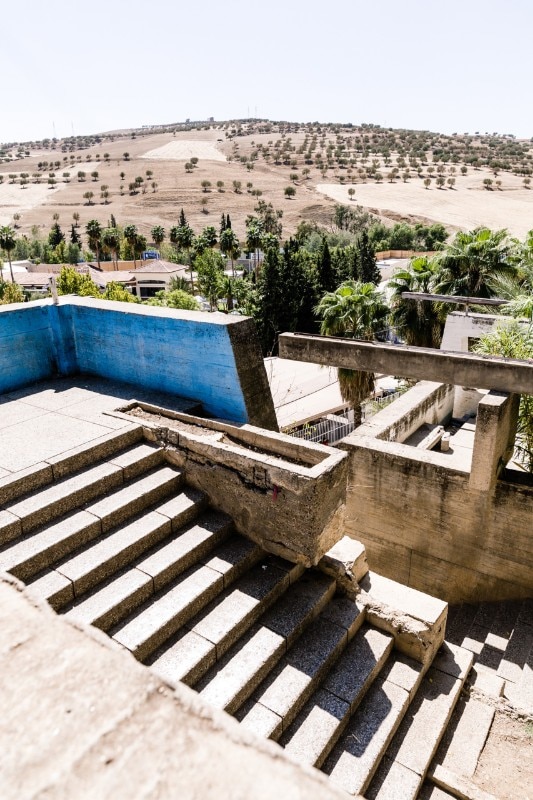
The project for the Sidi Harazem complex, developed between 1960 and 1975 perfectly fits this radically postcolonial intellectual wave, and so does the figure of its designer: Jean-François Zevaco, together with other architects like Elie Azagury — belongs to a group of Moroccan professionals educated at the Beaux Arts in Paris that, after graduating, developed an independent practice once back in their home country. CIAM principles and Zevaco’s research would part very early, and he would develop the Modern discourse in a peculiar key, embodying that spirit of progress animating and pushing Morocco in the early days of its independence. “It is a Moroccan story, conceived and written in Morocco”, as remarked by curator and architecture historian Lucy Hofbauer.
The progressive vision of Zevaco, combined with his tension towards a sculptural architecture, a brutalist rebel child of the Modern, quickly encompassed the entire oasis, thus articulating a new landscape: a vast circular pool, partly shaded by an exposed concrete canopée; the combination of a riad — a water garden, cut by concrete seguia, the canals — and a market, a kissaria dedicated to tourists and shaded by a pattern — made of pyramidal elements, around the massive modernist slab of the new hotel; the square, most of all, with the public fountain at its center gathering the travelers around the gushing spring water, and conceived as an ombrière, framed by brutalist pergolas and velaria. The former oasis village is substituted by a complex system of geometries, of spaces that are structured by a someway antique program, but finally built by its modern re-articulation, marked by the ubiquity of béton brut.
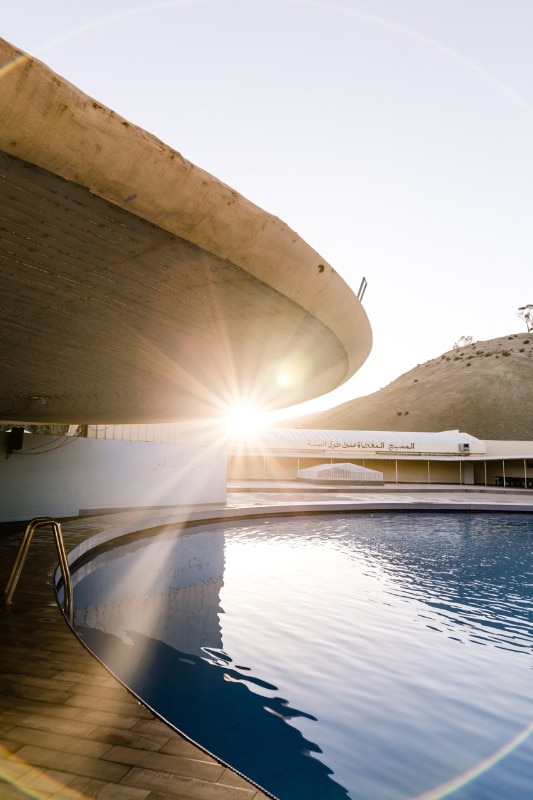
Somehow, the interaction of traditional practices with new shapes and the substantial evolution of history and customs of the population have determined a relative decline of the thermal complex over the last 30 years. Still, it has been quite a peculiar decline, striking differently according to different parts of the project; a decline which is largely due to a decrease of interest towards thermal tourism. The hotel structure itself was already not matching correctly this kind of touring practice — meaning for Moroccan people to sleep mostly at locals’ houses, or directly to sleep close to the spring, waiting for the healing intervention of a djinn at nighttime — the kissaria has been closed, the pool and the distribution of water have been taken over by forms of small private property and retail activity.
It’s all about a functional hibernation, rather than a proper decline, with the complicity of the decisional slowness of State authorities, once the client and the manager of the structure: the hotel, for instance, never really closed; it just remained operational and empty across the years.
On such hibernation, Moroccan architect Aziza Chaouni has chosen to operate through a reactivation project, working on both architecture and the processes that make it live. A specialist in the study of inhabited desert and a long—experienced manager of participated design processes, Chaouni has elaborated — with the consulting of curator Lucy Hofbauer, and on a mission promoted by Caisse de Dépôt et de Gestion — a conservation management plan that has been recently awarded a Keeping it Modern grant, created by the Getty Foundation for preservation and reactivation of Modern architectural heritage.
The project includes the restoration of the brutalist concrete works and the re-establishment of public realm in Sidi Harazem, this time making it economically and socially sustainable (two relevant limits of the project since its beginning were the constantly negative finance statements and the incomplete match between the project itself and the existing human fabric). After identifying in the site a threefold kind of heritage — architectural, natural, human — the project aims to re-establish the havre de paix that Jean-François Zevaco used to magnify, by working on three vectors that can make the place alive again: a so-called popular vector, focusing on giving back to the public the pool, and the site in general; the vector of a intellectual kind of luxury, where visitors will experience the place in the renovated Modern scenery of the hotel and in a newly built spa nearby; a social-educational factor, connected to the revivification of local horticultural tradition. This last vector is articulated in the institution of a cooking school for locals, in collaboration with Michelin-starred chef Najat Kaanache of Nur restaurant in the medina of Fes.
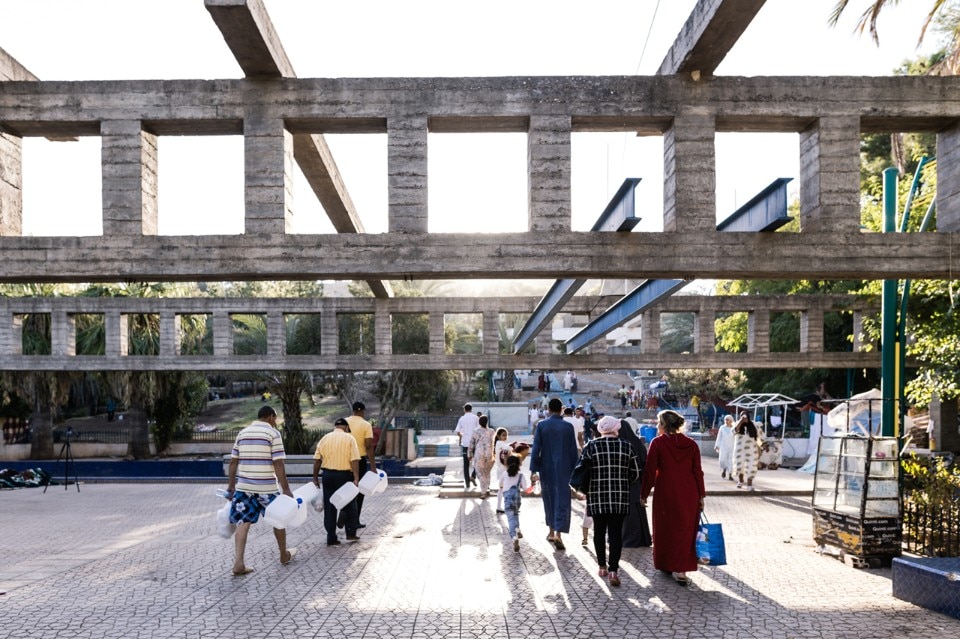
The whole process sets the base for its feasibility on a participative matrix: Chaouni has managed to gather and reunite all players, also the small local retailers, to redistribute the activities in the kissaria and the square; the production of an intellectual plus of interpretation for the place has been committed instead to the work of young artists, who could question the vocation and belonging of the place itself. In cooperation with the work of Andreea Muscurel, already a part of the project for Getty Foundation, the site has been explored through the architectural photographs of Zineb Andress Araki , through the portraits by M’hammed Kilito, through sound research by Abdellah Hassak ,through participative research processes by Léa Morin and Mohamed Fariji, through the works by Laila Hida on the informal dimension of the ombrière. Several different techniques, one common set of question about the place: is it French? Is it colonial? Is it post-colonial? Is it anti-colonial?
These works will be shown, together with the entire history of the project, in Rabat from next July 11th , then in Toronto and Marseilles: their intention not to research mere research on a current, evident situation is clear. These works want to contribute to the construction and vivification of a new history for Sidi Harazem, through the formulation of what we could call a good question, hat question which is capable to generate new proposals and interpretations of a space. In this vision, this will give a continuity to that spirit which animated Zevaco when he wanted — despite his position being less interrogative, but equally radical and innovative — to write the story of Sidi Harazem as the first chapter of a non-colonial Modern in a Moroccan oasis.
- Project:
- Sidi Harazem thermal baths
- Architect:
- Jean-François Zevaco
- Place:
- Fes, Marocco
- Restoration and reactivation project:
- Aziza Chaouni; Lucy Hofbauer (curatorial consultant); Caisse de Dépôt et de Gestion (promoter)
- Artists:
- Zineb Andress Araki; M’hammed Kilito; Abdellah Hassak; Léa Morin e Mohamed; Laila Hida
- Exhibition:
- from July 11,2019; Galerie Espace Expressions CDG, Place Moulay El Hassan, Rabat


